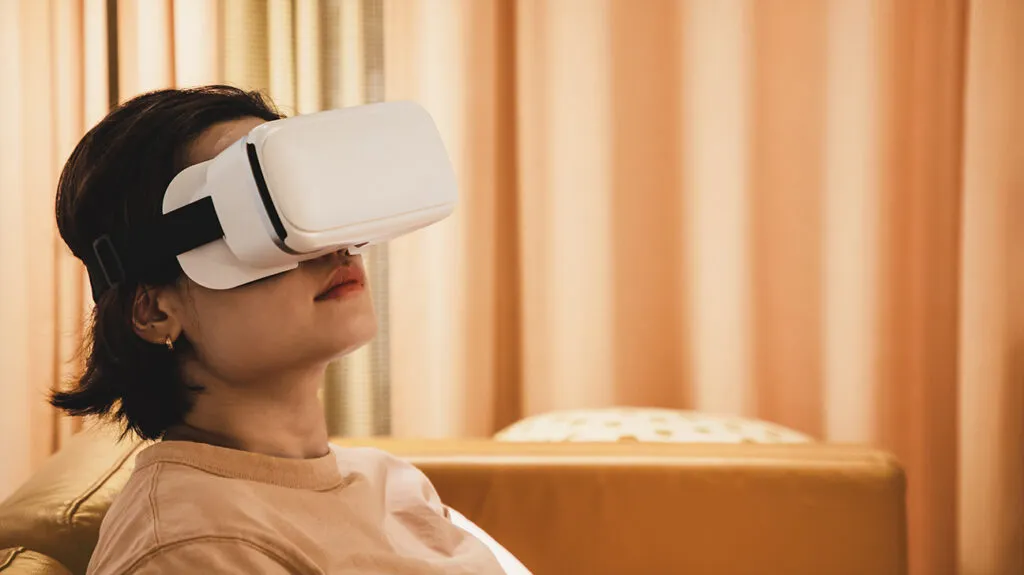With the constantly rising demand of mental health services and with COVID-19 pandemic which only accelerated the rise, psychologists and psychiatrists are searching for more convincing, modern methods to treat mental health problems. A technology that seems to be an answer to global mental health problem is Virtual Reality (VR) Therapy.
How does it work?
VR uses digitally created sensory background feedback from the artificial world to our world to replace our everyday experience. With the use of VR helmet and/or trackers, the user is able to see a realistic 3D environment in which he can easily interact with his / hers surroundings.
Why is VR a great tool for mental therapy?
First of all, VR environments can feel very real, almost undistuinguishible from the real environment. In a well known study, Bassolino et al. (2018) find out that respondents feel no difference between digital limbs created by VR and our limbs. Experiences in VR feel authentic because they achieve brain and behavioral responses from virtual stimulation that mirror those in the real world. Because of that VR therapy can help patients to ‘relive’ their traumas as realistically as possible in a safe and controlable environment.
VR potential and its future in Psychology
A huge benefit of VR therapy is the fact that it can be made incredibly personal and relevant by including objects, sounds and even smells from client’s past. This can be extremely useful when treating different kinds of phobias. High degree of control over VR environment helps the therapy to be more repeatable and progressive. Moreover, software is becoming extremely easy to use and can be adapted for theraphist needs. Sessions are available for replay and results can be collected for ongoing assessment. Apart from phobias, VR therapy has a potential and its already helping in: social anxiety disorder (virtually meeting new people), post-traumatic stress disorder, panic disorder, acute and chronic pain (decreasing pain via distraction rather than drug regime) and even addictions (providing safe and controlled exposure to drug-related cues)
References
Bassolino, M., Franza, M., Ruiz, J. B., Pinardi, M., Schmidlin, T., Stephan, M., … & Blanke, O. (2018). Non‐invasive brain stimulation of motor cortex induces embodiment when integrated with virtual reality feedback. European Journal of Neuroscience, 47(7), 790–799.
Bohil, C. J., Alicea, B., & Biocca, F. A. (2011). Virtual reality in neuroscience research and therapy. Nature Reviews Neuroscience, 12(12), 752–762.
Maples-Keller, J. L., Bunnell, B. E., Kim, S.-J., & Rothbaum, B. O. (2017). The use of virtual reality technology in the treatment of anxiety and other psychiatric disorders. Harvard Review of Psychiatry, 25(3), 103–113.
Sutton J. (2020). What Is Virtual Reality Therapy? The Future of Psychology.


Very interesting topic, Bartosz! I’d say that VR indeed enable therapists to create a safer and more controlled environment inside a VR headset. It also seems to be a quicker and less expensive option, that would make mental health treatment more accessible for those who lack money or time, or feel anxious to see a therapist in real life. Besides that, what is your point of view on the future evolvement of virtual reality therapy. Do you think that a safe and full self-guided VR therapy can emerge without being connected to a real therapist, or you rather consider this a tool that guide and aid a therapist’s treatment?